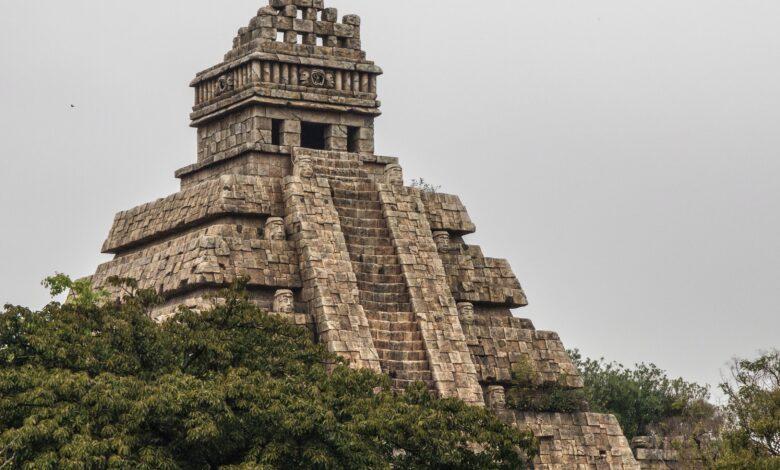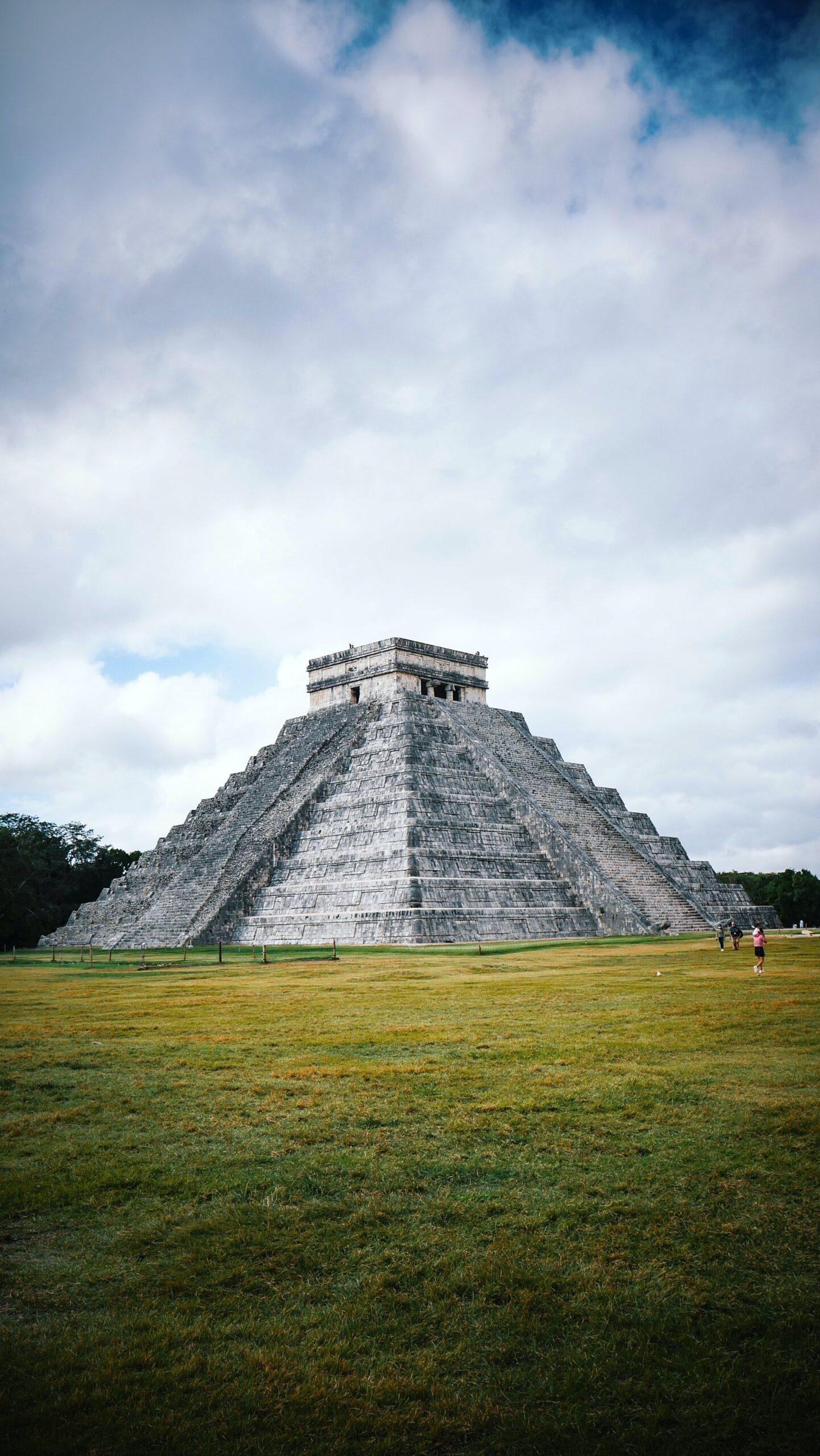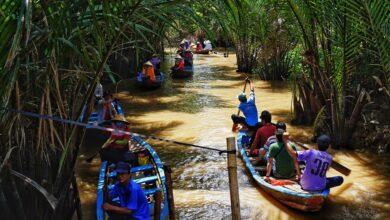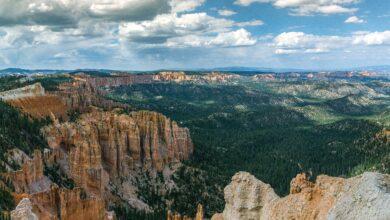🏛️ Exploring the Ancient Mayan Ruins of Copán, Honduras 🌴
Delve into the Mysteries of Copán's Mayan Legacy

Introduction
Step back in time and journey with us to the ancient city of Copán, nestled in the verdant landscapes of Honduras. As we venture into the heart of this UNESCO World Heritage Site, we unravel the mysteries of the Mayan civilization that once thrived in this remarkable city. From intricately carved monuments to towering pyramids, Copán beckons adventurers and history enthusiasts alike to explore its timeless wonders and uncover the secrets of its storied past.
Exploring the Main Plaza
The central plaza served as the heart of Mayan cities, embodying their cultural, political, and religious life. Typically located near the center of urban settlements, the Main Plaza was more than just a gathering space; it was a focal point where community members converged for various activities and ceremonies. Surrounded by impressive architectural structures, the Main Plaza was a testament to the Mayan civilization’s architectural prowess and societal organization.
Significance of the Main Plaza
The Main Plaza held immense significance in Mayan society, symbolizing the interconnectedness of the cosmos, the natural world, and the human realm. It was believed to be the axis mundi, the center of the universe, where the divine and earthly realms intersected. As such, it was the ideal location for conducting rituals, ceremonies, and religious observances aimed at maintaining harmony with the gods and the cosmos.
Iconic Structures
Among the notable structures within the Main Plaza was the Hieroglyphic Stairway, a monumental staircase adorned with intricate hieroglyphic inscriptions detailing the historical events, genealogies, and religious narratives of the Mayan people. This impressive architectural feat served not only as a means of communication but also as a visual representation of the Mayan worldview and cosmology.
The Ball Court, another iconic structure found in many Mayan cities, was a focal point for ritualistic ballgames that held religious and political significance. These ballgames were more than mere sporting events; they were sacred rituals believed to have cosmological implications, including the recreation of mythological narratives and the enactment of cosmic battles between opposing forces.
Rituals and Ceremonies
The Main Plaza was a hub of activity during religious festivals and ceremonies, which were integral to the Mayan calendar and cosmology. These ceremonies encompassed a wide range of rituals, including offerings, sacrifices, dances, and processions, all aimed at appeasing the gods, ensuring agricultural fertility, and maintaining cosmic order.
Priests, adorned in elaborate ceremonial attire, played a central role in conducting these rituals, serving as intermediaries between the human and divine realms. Through their actions and invocations, they sought to communicate with the gods, seek their blessings, and ensure the well-being of the community.
The Main Plaza thus stood as a testament to the rich cultural heritage and spiritual beliefs of the ancient Maya, offering insights into their worldview, social organization, and religious practices. Today, these archaeological sites continue to captivate and inspire visitors, inviting them to explore the mysteries of this ancient civilization.
Introduction to the Great Plaza and its monumental architecture
The Great Plaza stands as a testament to the architectural prowess and cultural significance of the ancient civilization that once thrived in this region. Situated at the heart of the city, it served as a focal point for religious ceremonies, political gatherings, and various other communal activities. Spanning across vast expanses, the plaza is flanked by imposing structures, each bearing intricate carvings and inscriptions that offer glimpses into the beliefs and practices of its creators.
Description of key monuments such as the Temple of Inscriptions and Altar Q
Among the myriad of architectural marvels adorning the Great Plaza, the Temple of Inscriptions emerges as a towering symbol of spiritual devotion and artistic mastery. This monumental pyramid, adorned with hieroglyphic texts and intricate reliefs, served as a funerary monument for esteemed rulers of the past. Its grandeur is matched only by the significance of the discoveries made within its chambers, including the tomb of the revered ruler Pakal the Great, unveiling invaluable insights into ancient Mayan funerary practices and cosmological beliefs.
Altar Q, another prominent feature of the Great Plaza, serves as a testament to the political and dynastic intricacies of the Mayan civilization. This intricately carved monument depicts a gathering of rulers, each identified by hieroglyphic texts detailing their lineage and achievements. The altar stands as a visual chronicle of the dynastic successions and alliances that shaped the political landscape of the ancient Mayan city-states, offering valuable insights into the power structures and rituals of governance that governed this society.
Interpretation of the hieroglyphic inscriptions and their significance
The hieroglyphic inscriptions adorning the monuments of the Great Plaza serve as windows into the rich tapestry of Mayan culture, history, and belief systems. Through careful decipherment and analysis, scholars have been able to unravel the stories of conquests, rituals, and divine interactions recorded within these texts. From recounting the exploits of revered rulers to documenting religious ceremonies and astronomical observations, these inscriptions offer invaluable insights into the worldview and ideological framework of the ancient Mayan civilization. Each glyph carries layers of meaning, shedding light on the intricate interplay between myth, politics, and cosmology that shaped the cultural landscape of the region.

FAQs
Q. What is Copán?
A. Copán is an ancient Mayan city located in western Honduras, near the border with Guatemala. It was once a powerful center of Mayan civilization, known for its impressive architecture, intricate hieroglyphics, and significant archaeological findings.
Q. How do I get to Copán?
A. The nearest major airport to Copán is in San Pedro Sula, Honduras. From there, you can either take a bus or hire a private car to reach Copán, which is approximately a 3-4 hour drive away. Alternatively, you can arrange for a guided tour that includes transportation to and from Copán.
Q. What should I wear when visiting Copán?
A. It’s recommended to wear comfortable clothing and sturdy walking shoes as you’ll be exploring archaeological sites and possibly hiking uneven terrain. Since Copán can get quite hot during the day, light and breathable clothing is advisable. Don’t forget to bring a hat, sunglasses, and sunscreen to protect yourself from the sun.
Q. Are there tour guides available at Copán?
A. Yes, there are licensed tour guides available at Copán who can provide you with valuable insights into the history and significance of the archaeological site. Hiring a guide is highly recommended as they can enhance your experience by explaining the significance of the various structures and artifacts you’ll encounter.
Q. What are the must-see attractions in Copán?
A. Some of the must-see attractions in Copán include the Hieroglyphic Stairway, the Great Plaza, the Ball Court, the Acropolis, and the Museum of Mayan Sculpture. These sites offer a fascinating glimpse into the ancient Mayan civilization and its cultural and architectural achievements.
Q. Is it safe to visit Copán?
A. Generally, Copán is considered safe for tourists. However, it’s always advisable to exercise caution and be aware of your surroundings, especially when exploring archaeological sites and unfamiliar areas. It’s recommended to travel with a reputable tour operator or guide and to follow any safety guidelines provided by local authorities.
Conclusion
As our exploration of Copán draws to a close, we reflect on the enduring legacy of the Mayan civilization and the remarkable achievements of the people who once called this city home. From the grandeur of its monumental architecture to the intricacy of its hieroglyphic inscriptions, Copán stands as a testament to the ingenuity and cultural richness of the ancient Maya. As we bid farewell to this captivating site, may its mysteries continue to inspire wonder and curiosity for generations to come, reminding us of the profound connection between past and present, and the timeless allure of human history.
UP NEXT
https://touristeyes.com/kyrgyzstan-travel-guide/



Facebook Comments